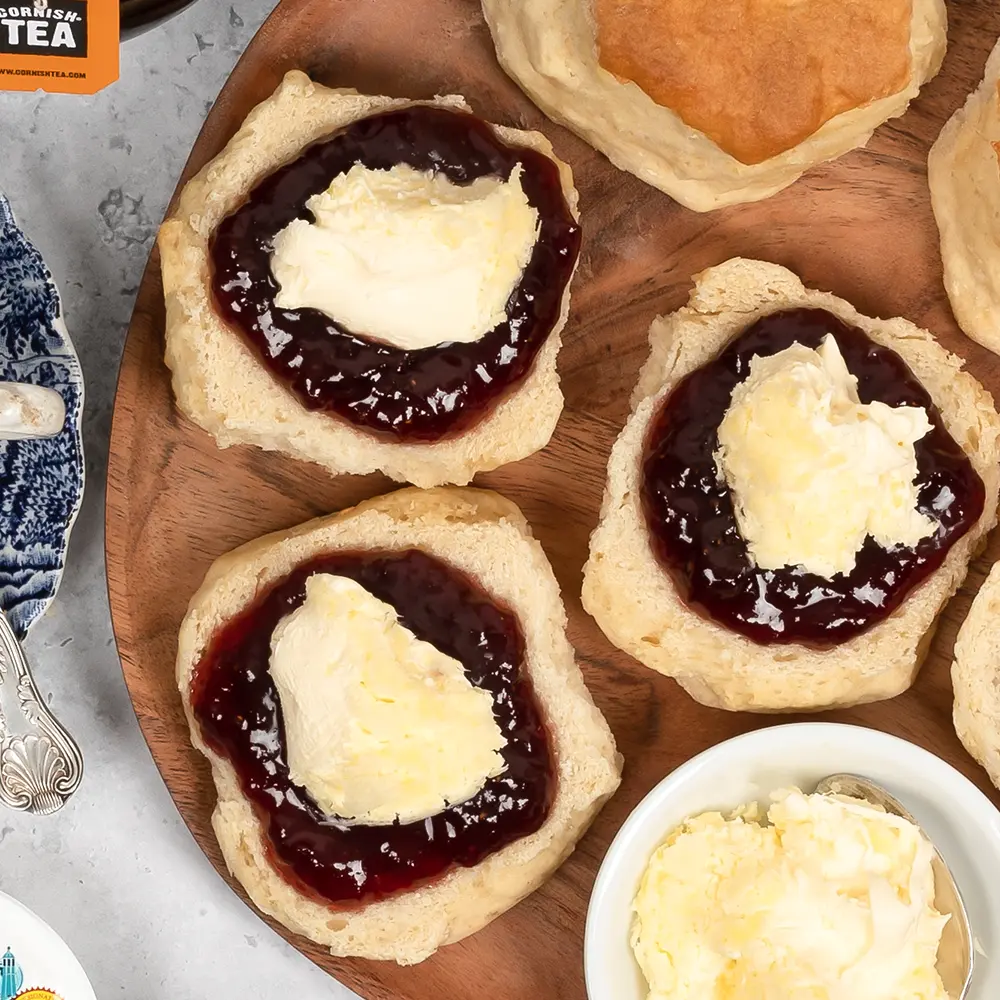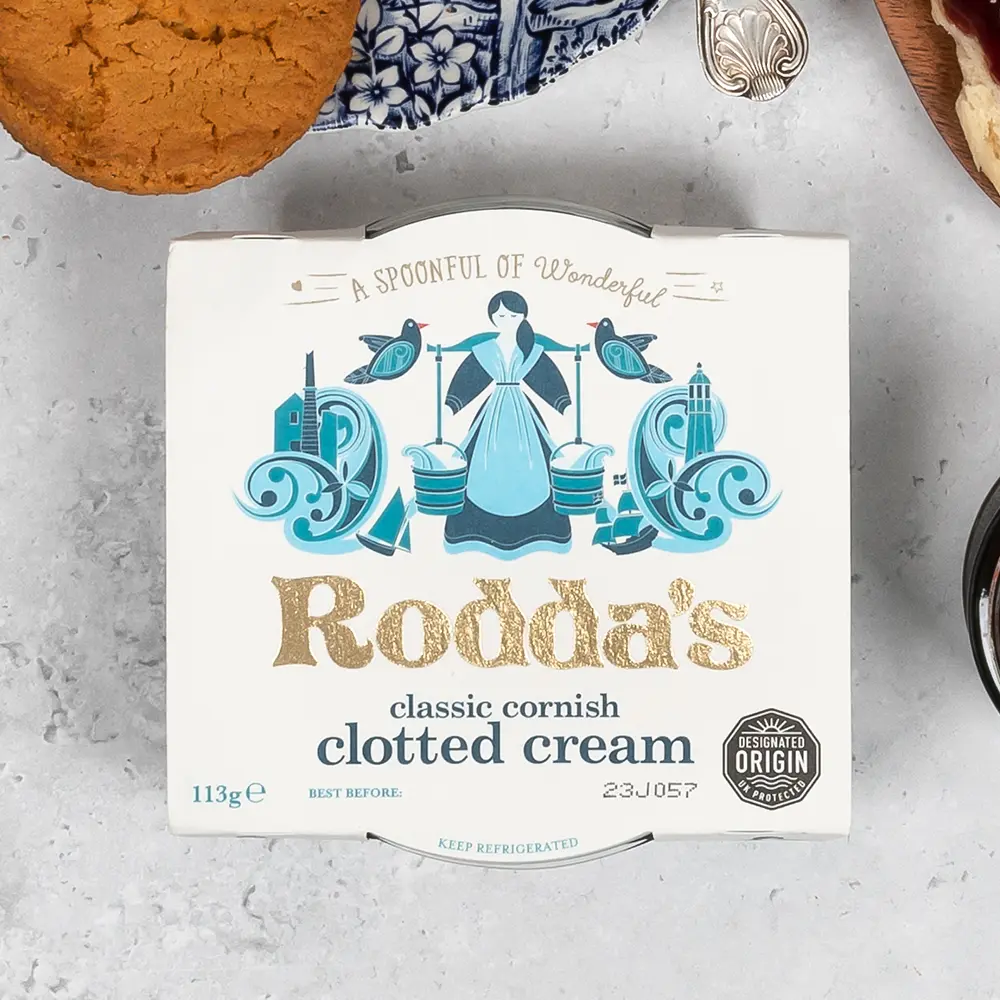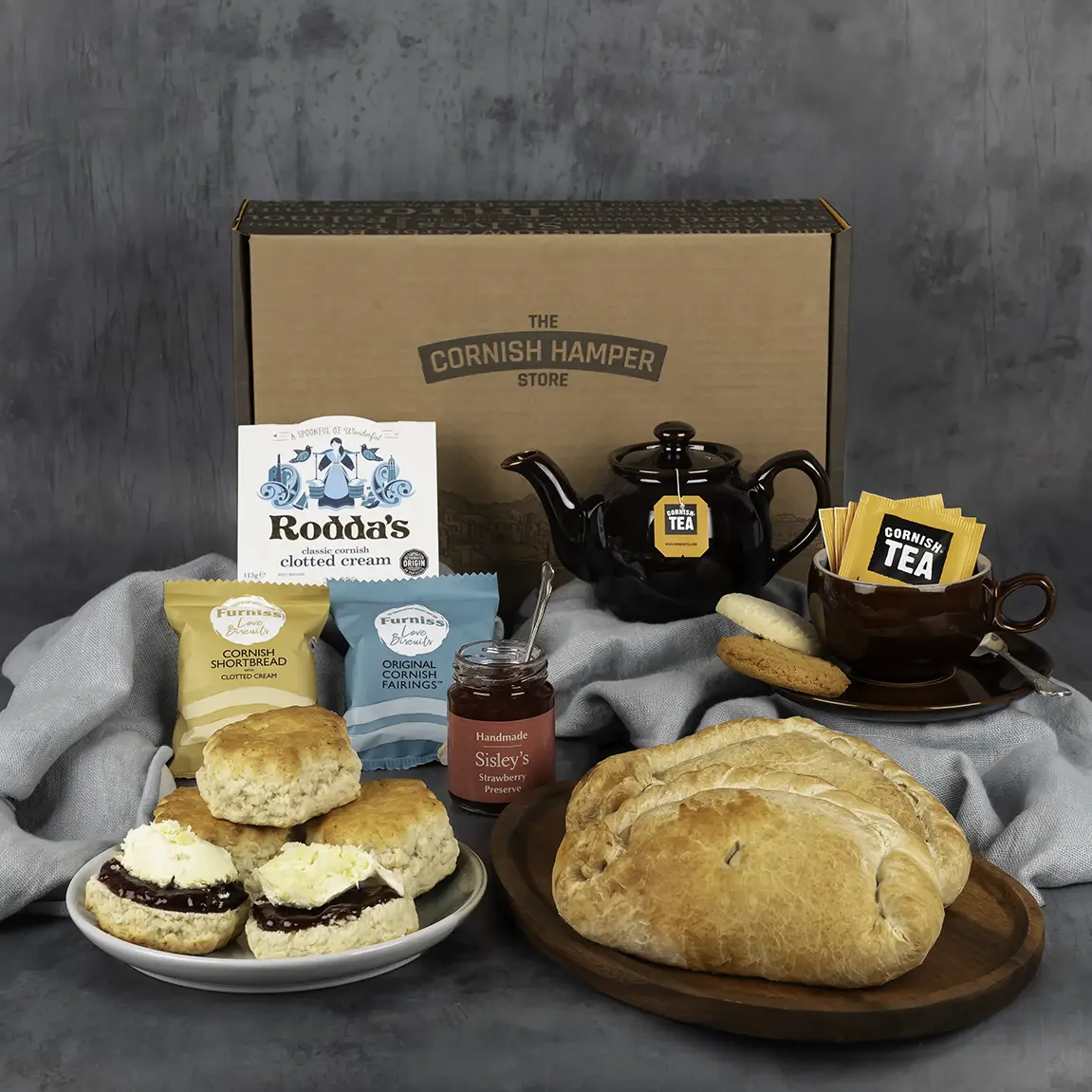Few things are more British than a traditional cream tea, but the age-old debate between Cornwall & Devon over how it should be served still lives on. While both counties take great pride in their scones, clotted cream, and jam, we Cornish folk know that there’s only one correct way to enjoy this delightful treat. So, what exactly is the difference between a Devon and a Cornish cream tea? And why does the Cornish way reign supreme? Let’s break it down…
The Order of Ingredients: The Defining Factor
The fundamental difference between a Devon and a Cornish cream tea comes down to one crucial factor: the order in which you spread your toppings. In Devon, they prefer to smother their scone with clotted cream first and then add a spoonful of jam on top.
The “proper” Cornish way is to spread a layer of jam first, followed by a generous dollop of clotted cream. This method allows the jam’s natural sweetness to shine through before being complemented by the rich, velvety texture of the cream. It’s a matter of balance, contrast, and pure perfection.

The Scones: A Difference in Texture and Taste
Beyond just the topping order, the scones themselves vary between the two regions. Devon scones tend to be slightly richer, sometimes leaning towards a more cake-like consistency. Meanwhile, Cornish scones have a flakier, crumblier texture, providing a tasty melt-in-your-mouth consistency.
A true Cornish cream tea experience is about more than just taste—it’s about tradition and texture. A flaky scone that gently crumbles as you take a bite, releasing a symphony of flavours, is simply unbeatable.

The Clotted Cream: Cornwall’s Crown Jewel
One of the most important aspects of a cream tea is, of course, clotted cream. Both Devon and Cornwall produce this luxurious dairy delight, but Cornish clotted cream is a clear winner. The golden crust on top of proper Cornish clotted cream is a mark of its authenticity and richness, a feature that Devonshire cream often lacks.
Cornish clotted cream is traditionally made by slowly heating unpasteurised cow’s milk, allowing the cream to rise to the surface and develop that signature golden hue. It’s this slow and careful process that results in a thick, indulgent cream. Devonians may argue otherwise, but any true cream fan knows that Cornish clotted cream is simply the best.
Our cream tea hampers are packed with Rodda’s famous Cornish Clotted Cream – with their signature delicate crust. You can find singular pots here in our Cornish Pantry.

The Final Verdict: Cornish Cream Tea Wins
While Devon and Cornwall may forever be at odds over their approach to cream tea, one thing is certain: the Cornish method provides the perfect balance of sweetness, richness, and texture. Layering the jam first ensures a perfect blend of flavors, letting its fruity notes shine before the cream melts on the tongue.
So, next time you’re enjoying a cream tea, do it the Cornish way… Because some traditions are just too delicious to compromise!
You can find our full range of tasty Cream Tea Hampers here.



 Mother’s Day Delivery SOLD OUT. Next Delivery Date: 1st April
Mother’s Day Delivery SOLD OUT. Next Delivery Date: 1st April 
